ASUS was onto a good thing with the Zenfone 9 and Zenfone 10. The Taiwanese manufacturer stood out by delivering small phones with the best possible hardware, and they were genuinely enjoyable to use. While I usually prefer larger phones, I’ll agree that both the Zenfone 9 and Zenfone 10 offered something that was sorely lacking.
That’s why it was puzzling to see ASUS switch tack with last year’s Zenfone 11 Ultra, reverting to a slab of a phone that was basically a rebadged version of its gaming device. The strategy didn’t make much sense to me; in choosing to go back to a bigger phone, the brand lost the distinctiveness that made earlier models notable, and the device as a whole wasn’t anywhere as good as the Zenfone 10.

Annoyingly, the Zenfone 12 Ultra doesn’t do anything to rectify the situation this year — you get roughly the same design as the Zenfone 11 Ultra, and barring iterative updates, there isn’t anything new. I was holding out on ASUS going back to a smaller design this time around, but that isn’t the case.
While I still like the combination of hardware and software, the Zenfone 12 Ultra just doesn’t do enough to distinguish itself against Chinese rivals that have much better camera systems, and ASUS’s lackluster software update policy ultimately makes the device a non-starter.
ASUS Zenfone 12 Ultra: Pricing and availability
(Image credit: Harish Jonnalagadda / Android Central)
ASUS unveiled the Zenfone 12 Ultra on February 6, and the device is launching in Taiwan, Hong Kong, and Europe initially. The phone will be sold in a single 16GB/512GB variant outside Taiwan, and it will cost €1,099 ($1,141). To incentivize the launch, ASUS is discounting the device by €100 until February 28, so buyers will be able to pick it up at €999 ($1,037).
ASUS doesn’t have definite plans to launch the Zenfone 12 Ultra in the U.S. or U.K. at the moment, and I’ll add an update if that situation changes. It is possible we might see the device debut in North America at a later point — that has been the case in previous years — but it isn’t a given at this point.
Swipe to scroll horizontallyCategoryASUS Zenfone 12 UltraDisplay6.78-inch LTPO AMOLED, 120Hz, FHD+, HDR10, 2500 nits max, Gorilla Glass Victus 2OSZenUI based on Android 15ChipsetQualcomm Snapdragon 8 Elite, 3nmRAM16GB LPDDR5XStorage512GB UFS 4.0Rear camera 150MP f/1.8 Sony Lytia 700, 6-axis Hybrid Gimbal StabilizerRear camera 213MP f/2.2 wide-angle, 120-degree FoV, autofocusRear camera 332MP f/2.4 telephoto, 3x optical zoom, 30x digital zoom, OISFront camera32MPIngress protectionIP68 dust and water resistanceConnectivityWi-Fi 7, Bluetooth 5.4, global 5G bands, NFC, dual-band GPS SecurityOptical in-screen sensorAudio3.5mm jack, stereo sound, 24-bit/192kHz, Snapdragon Sound, AptX HD, AptX Adaptive, AptX LosslessBattery5500mAh, 65W USB PD 3.0 charging, 15W wireless chargingDimensions163.8 x 77.0 x 8.9mm, 220gColorsEbony Black, Sakura White, Sage Green
ASUS Zenfone 12 Ultra: Design

(Image credit: Harish Jonnalagadda / Android Central)
I managed to break the Zenfone 12 Ultra after just three days of use, so that’s as good a place to start as any. The device slid out of my pocket and hit the floor, and even though the distance was just over two feet, the angle of impact — along an edge — meant that it picked up a spiderweb of cracks originating at the back.
Let’s talk about the protection — or lack thereof. The Zenfone 12 Ultra has a glass back with Gorilla Glass 3, and while the protective layer does a great job against scratches, it doesn’t do much against tumbles (as evidenced with my unit). Most phones I use these days come with Gorilla Glass Victus or Victus 2, and they have much better resilience against tumbles.

(Image credit: Harish Jonnalagadda / Android Central)
Brands like Vivo and Honor are using their own glass protective layers on their latest phones, and after extended use involving a half-dozen drops, I didn’t notice any damage on the X200 Pro or Magic 7 Pro. In fact, phones are generally resilient enough that I don’t use a case with any of the devices I test outside of the iPhone 16 Pro Max and Pixel 9 Pro XL.

(Image credit: Harish Jonnalagadda / Android Central)
I guess the acute angle of impact probably contributed to the glass breaking, and it made using the phone all the more annoying as I had to put it in a case. Another point of contention is that because ASUS doesn’t sell the Zenfone 12 Ultra in as many regions as it used to, there’s no way to reliably get the rear glass changed — ASUS has no plans to launch the phone in India.
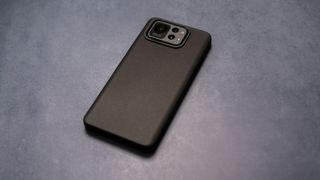
(Image credit: Harish Jonnalagadda / Android Central)
Annoyingly, there aren’t many accessories either. I tend to prefer ultra-thin cases as they don’t add too much heft to the phone, but most case brands aren’t releasing accessories for the device, so your choices are very limited in this regard. ASUS bundled a bulky Rhinoshield case with the phone, and that’s the one I had to go with.
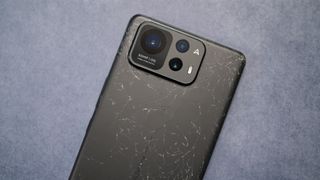
(Image credit: Harish Jonnalagadda / Android Central)
The design of the phone itself isn’t particularly noteworthy. You basically get a plain glass back with a rectangular camera island, and the design is largely forgettable. There isn’t any defining feature to the phone, and it just doesn’t look like a flagship that costs over $1,000.
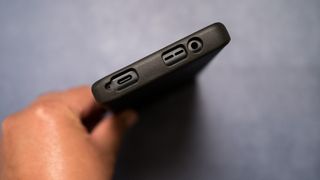
(Image credit: Harish Jonnalagadda / Android Central)
There’s an aluminum mid-frame, and ASUS says it’s using 100% recycled aluminum this time, which is good to see. The Ebony Black variant doesn’t stand out, but you can get the phone in Sakura White and Sage Green, with the green model the best of the lot.
Because the phone uses the same foundation as ASUS’s gaming-oriented devices, the USB-C port is located to the side. This is inconvenient if you’re trying to slot the phone into a mobile controller like the GameSir G8 Galileo, or charge the device when it’s on a phone stand.
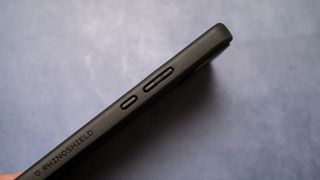
(Image credit: Harish Jonnalagadda / Android Central)
While the Zenfone 12 Ultra is lighter than last year at 220g, it is bulkier and taller than most other phones I used recently. Honestly, ASUS should have stuck with the flamboyant styling and bright hues that made the Zenfone 9 and 10 so distinctive — I used budget phones that have better character.
ASUS Zenfone 12 Ultra: Display
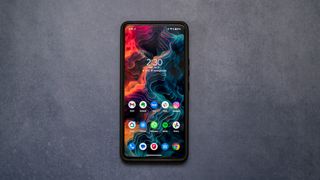
(Image credit: Harish Jonnalagadda / Android Central)
ASUS isn’t making any changes to the panel this year, so the Zenfone 12 Ultra comes with the same 6.78-inch Samsung AMOLED panel as its predecessor. It uses LTPO tech to dynamically adjust refresh between 1Hz to 120Hz, and it goes up to 144Hz in select games.
The 2400 x 1080 resolution is unchanged as well, as is the max brightness of 2500 nits when viewing HDR content. While the Vivo X200 Pro, Pixel 9 Pro XL, and Magic 7 Pro get brighter in regular use, there are no inherent issues with the Zenfone 12 Ultra in this regard — the panel is readable under harsh sunlight.
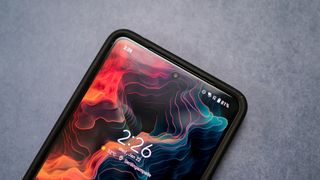
(Image credit: Harish Jonnalagadda / Android Central)
ASUS knows how to calibrate the panels on its phones, and the Zenfone 12 Ultra has great colors out of the box, and you get a good amount of customizability when it comes to adjusting the color balance. The bezels are just as thin as last year, and it makes using the device just that little bit more exciting. Also, the optical fingerprint sensor is located in the ideal position, and I had no problems accessing it.
You even get a 3.5mm jack, with ASUS being the only brand to still offer the feature on a high-end phone. It’s not just the inclusion of the analog jack either; ASUS put in a lot of work to deliver great audio, and the collaboration with Dirac genuinely makes a difference.
Thankfully, the screen is protected by Gorilla Glass Victus 2, and the only thing I’ll say about it is that ASUS should have used the same coating at the back too. Gaming or consuming content on the device is highly enjoyable, and other than the limited selection of always-on styles, I don’t have any problems with the panel on the phone.
ASUS Zenfone 12 Ultra: Hardware and battery
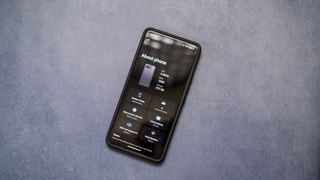
(Image credit: Harish Jonnalagadda / Android Central)
ASUS clearly knows how to make phones with top-notch hardware, and the Zenfone 12 Ultra is a true powerhouse. Similar to its predecessors, the device comes with the latest Qualcomm silicon, and it is about the fastest mobile chipset available today — it even outshines the A18 in single-core workloads.
I got the 16GB/512GB variant of the device, and this is the variant that ASUS is rolling out globally. ASUS did a fantastic job setting up the phone, and it absolutely flies — this is the fastest phone I used in 2025. There are no slowdowns, no glitches or stutters, and the phone does a terrific job in demanding games. It has stricter thermal limitations than the ROG Phone 9 Pro, and honestly, that’s a good thing; the phone doesn’t get absurdly hot, but it still manages to deliver stable framerates.
Swipe to scroll horizontallyCategoryASUS Zenfone 12 UltraHonor Magic 7 ProVivo X200 ProGeekbench 6 (single-core)311629652381Geekbench 6 (multi-core)982463427175PCMark Work 3.0 (Overall)255582100815731PCMark Work 3.0 (Web Browsing)321472488913716PCMark Work 3.0 (Video Editing)915280725823PCMark Work 3.0 (Writing)328432750424744PCMark Work 3.0 (Photo Editing)5908640642135823DMark Wild Life Extreme (score)4782639160703DMark Wild Life Extreme (FPS)28.6438.2736.353DMark Solar Bay (score)786311298110213DMark Solar Bay (FPS)29.942.9641.91Geekbench AI (Quantized Score)547821152436
It shouldn’t be astonishing that the Zenfone 12 Ultra posted the highest scores in the likes of Geekbench 6. A higher thermal limit than most other devices in this category — it went up to 46 degrees in 3DMark’s Steel Nomad stress test — combined with great optimization gives the phone a distinct advantage, and even though it isn’t branded as such, this is basically one of the best Android gaming phones you can get today.
There are plenty of cool additions as well; ASUS has a back tap gesture that’s inherently customizable, and interestingly, the gesture works even with a bulky case. ASUS also leverages the entire Qualcomm suite of options, so you get the AptX HD and AptX Lossless codecs as standard.
I didn’t run into any issues with connectivity — either in the house or outside — and other than the vibration motor lacking granularity, there are no problems whatsoever with the hardware. ASUS continues to excel in this area, and if you want a powerful phone designed for gaming, you’ll love what the Zenfone 12 Ultra has to offer.
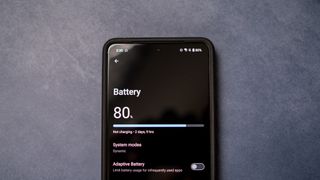
(Image credit: Harish Jonnalagadda / Android Central)
Coming to the battery side of things, the phone gets the same 5500mAh battery as last year. It’s split into dual 2750mAh units, and uses the standard USB PD 65W protocol to charge, so you can use any PD charger with ease. This is relevant, because ASUS no longer bundles a charger in the box. I’m annoyed that other Android brands are starting to follow Samsung and Google, and I don’t see why ASUS couldn’t just bundle the charger with the package.
Anyway, the phone lasts a day without any problems, and there’s no anxiety whatsoever with regards to the battery running out before the end of the day — even with heavy use. It takes 44 minutes to charge the battery using a 65W PD charger, and while it isn’t the longest-lasting device I tested in 2025 — that’s the Vivo X200 Pro — it easily lasts a day, and that’s good enough.
ASUS Zenfone 12 Ultra: Cameras
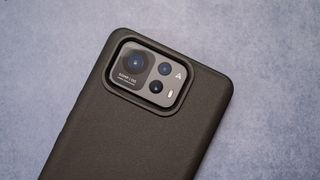
(Image credit: Harish Jonnalagadda / Android Central)
ASUS went with a 50MP main camera that features Sony’s Lytia-700 imaging module, and you get a 32MP telephoto with 3x optical zoom, and a 13MP wide-angle lens. Alongside the new main camera, ASUS tweaked the gimbal stabilization system to allow the device to take even better videos. Outside of that, there are no differences to the Zenfone 11 Ultra — ASUS is using the same lenses on the auxiliary cameras as last year.
The camera interface hasn’t changed from last year, but there’s a document scanning option now, and an easier way to trigger a timer. You get the usual AI-assisted shooting modes, and they do a decent enough job ensuring the subject is always in focus. The new gimbal stabilization tech is better than last year, and you see a noticeable difference when you move around whilst taking videos.
However, video quality itself isn’t the best, and the Zenfone 12 Ultra doesn’t come anywhere close to its rivals in this area. Annoyingly, 4K60 video is limited to the main camera, so you can’t use the mode with the auxiliary sensors. This severely inhibits the versatility of the cameras, and honestly, if you plan on taking a lot of videos, I’d suggest getting the Vivo X200 Pro instead.
Image 1 of 8








Coming to photos, the Zenfone 12 Ultra has good dynamic range and color accuracy in daylight shots, and foliage is rendered accurately without any aggressive artifacting. It has issues focusing at times, and it doesn’t do anywhere as well as the Pixel 9 Pro XL or Honor Magic 7 Pro at taking photos of fast-moving subjects.
The auxiliary lenses are decent enough, but yet again, they don’t have the same level of detail or color fidelity as other high-end phones, and this is noticeable in low-light imagery. The main camera, however, does a much better job in challenging situations than previous years, and I have no qualms about that sensor.
I seem to say this every year, but the Zenfone 12 Ultra has the best camera package ASUS delivered to date. However, it isn’t anywhere as good as what other Chinese brands are offering at the moment. If you don’t intend to use the cameras too much and instead want a powerful phone that also takes passable photos, the Zenfone 12 Ultra is still a good choice. But if you want best-in-class imaging modules and camera tuning, you’ll need to get the X200 Pro or the Find X8 Pro.
ASUS Zenfone 12 Ultra: Software
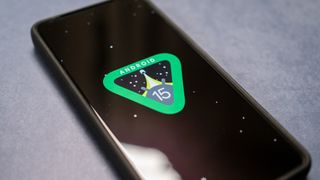
(Image credit: Harish Jonnalagadda / Android Central)
ASUS has one of the best software interfaces of any Android phone today. There isn’t a vanilla UI as such with Android these days, but the Taiwanese brand did a great job balancing minimal styling with extensive customizability, and using the interface evokes fond memories of OxygenOS 9.5.
The interface is optimized incredibly well, and it has better fluidity than just about any other phone today — including the OnePlus 13, Vivo X200 Pro, Honor Magic 7 Pro, and the Pixel 9 Pro XL. It’s just a delight to use the UI, and I’m a fan of the customizability on offer; you can endlessly tweak gestures, styling of the volume slider and notification pane, power menu, call screen, and so much more.
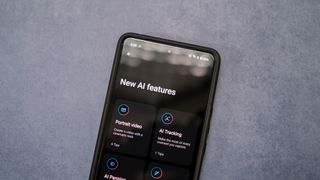
(Image credit: Harish Jonnalagadda / Android Central)
Basically, ASUS put in the work in rolling out utilities you’ll actually end up using, and that alone makes ZenUI stand out. The phone runs Android 15 out of the box, and like every other manufacturer, ASUS is doubling down on AI. Thankfully, ASUS clearly delineates between cloud and on-device AI, so if you don’t want your data going to a server, you can just choose to use the built-in language models.
There’s good news on that front, with ASUS noting that the Zenfone 12 Ultra uses Meta’s Llama 3 8B language model to power on-device AI summarization. You also get real-time translation and semantic search — where it searches metadata to pull up useful info — and both of these are run entirely on-device. AI-assisted transcribing, document summaries, and article summaries use a combination of cloud and on-device AI, and all of these features do a good enough job in regular use.
Look, I’m not the biggest fan of AI features, and my usage of most of these utilities extends to testing them out for the review. But I do so with all phones that cross my desk, and I’ll admit that ASUS does a better job in this regard than most manufacturers. I still think Google has the definite edge when it comes to phone-based AI utilities, but ASUS is doing all the right things.
Talking about doing the right thing, the one area where ASUS needs to be better is software updates. The Zenfone 12 Ultra will get just two Android platform updates and five years of security updates, and that just isn’t enough. Even budget phones now routinely offer three updates — like Nothing’s Phone 2a — so there’s no excuse for a device that costs over $1,000 to get two platform updates in 2025.
This has always been a sore point with ASUS’s devices in the past, and I assumed the brand would change its stance in 2025 — that just isn’t the case.
ASUS Zenfone 12 Ultra: The alternatives
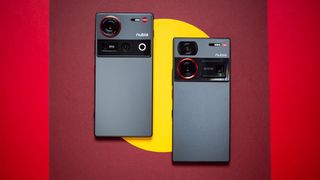
(Image credit: Apoorva Bhardwaj / Android Central)
If you need a high-end phone in 2025, you should consider getting the OnePlus 13. OnePlus nailed the basics this time, with the device featuring a design that’s better to hold and use. The blue leather model in particular looks striking, and after nearly a month of use, I didn’t see any issues with durability or build quality.
The cameras are outstanding, and the hardware is among the best you can get today. While it doesn’t match the Zenfone 12 Ultra at gaming, that’s about the only negative I can think of. The battery lasts a day and a half, it doesn’t take as long to charge, and the software is optimized incredibly well. In short, the OnePlus 13 is the new yardstick, and coming in at $899, it doesn’t cost as much as ASUS’s offering.
If you don’t need the best cameras, Nubia’s Z70 Ultra is a decent alternative. It also has terrific hardware, and while the software isn’t anywhere as good as the Zenfone 12 Ultra, it has a relatively clean UI and is optimized very well. And at $729, it is a much better value.
ASUS Zenfone 12 Ultra: Should you buy it?
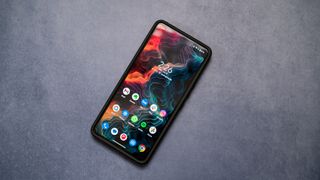
(Image credit: Harish Jonnalagadda / Android Central)
You should buy this if:
You want the best hardware packageYou need clean software without any bloatYou want terrific battery life
You shouldn’t buy this if:
You need long-term Android updatesYou want the best camerasYou need a phone with a stylish design
I tend to like ASUS’s phones for one simple reason: the software is tuned to my tastes. The clean interface along with extensive customizability and great optimization leads to an experience that’s enjoyable, and it is a genuine differentiator. Of course, the hardware plays a big part in this as well, and ASUS has once again delivered one of the strongest hardware packages around.
But that’s the thing — while I like using the phone quite a bit, I wouldn’t recommend it. Given that the Zenfone 12 Ultra is a high-end device, I’ll have to judge it against other flagships, and it just doesn’t measure up in a lot of areas; the cameras don’t come close to the X200 Pro, Honor Magic 7 Pro, or the Pixel 9 Pro XL, the design isn’t distinctive enough, and ASUS’s middling software update policy is infuriating.
It’s not that the Zenfone 12 Ultra is a bad phone — far from it — but it is going up against strong rivals, and I can’t help but feel that it just isn’t good enough for what it costs. These shortcomings would have been excusable on a $500 phone, but the Zenfone 12 Ultra costs more than double that, and in this category, even minor flaws become deal-breakers — which is exactly the case here.





GIPHY App Key not set. Please check settings